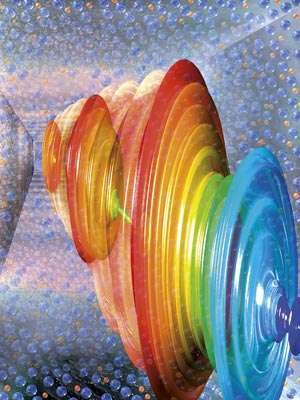Unusual silicon-rich alloy offers enhanced channeling of light for optical computer chips

To improve the efficiency of waveguides—devices that guide light on the surface of silicon optical computer chips—a complex balance must be struck. The need for enhanced optical signal processing properties competes with the demand for low optical losses in waveguide material. Now, A*STAR researchers have developed an alloy that fits the bill, while achieving compatibility with existing silicon computer chip fabrication technology.
"Our waveguides will be an excellent platform for future demonstrations of nonlinear integrated optical signal processing with lower powers, large scale manufacturability, and potential new functionalities," says Doris Ng from the A*STAR Data Storage Institute research team who conducted the study with researchers from the Singapore University of Technology and Design.
For optical waveguides, a material must show low optical loss. To ensure good performance, it also needs to exhibit nonlinear optical properties—which allow, for example, the conversion of light from one color into another—a requirement for optical signal processing. Lastly, but vitally, it must be manufactured at relatively low temperatures to be compatible with silicon chip fabrication processes.
Alloys made of silicon and nitrogen seem to be the right materials for the job. Their high optical refractive index allows them to confine light on the surface of a chip. Furthermore, they can be fabricated on a silicon chip using an established vapor deposition process at low temperatures.
However, the chemically favored material composition for silicon nitride materials—three parts silicon to four parts nitrogen—does not achieve a good balance between nonlinear properties and the refractive index. The team explored other silicon–nitride ratios to achieve a better balance of properties and discovered that alloys with a higher silicon composition—roughly twice as much silicon as nitrogen—show much more favorable properties. In one case, it achieved an optical nonlinearity almost 500 times stronger than the typical composition.
To test the overall optical properties, the researchers studied supercontinuum light generation, a process where a laser beam of one color is converted into a beam having a broad range of colors (see image). The results demonstrate the broad potential of the silicon-rich silicon nitrides for applications, says Ng. "This serves as a starting point for more sophisticated systems leveraging nonlinear optics. It is especially pertinent within the telecommunications wavelength, where many other materials experience either low nonlinearities or large nonlinear losses."
More information: Ting Wang et al. Supercontinuum generation in bandgap engineered, back-end CMOS compatible silicon rich nitride waveguides, Laser & Photonics Reviews (2015). DOI: 10.1002/lpor.201500054





















